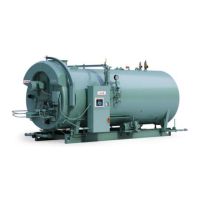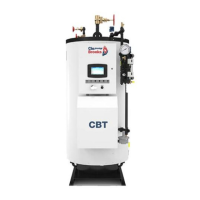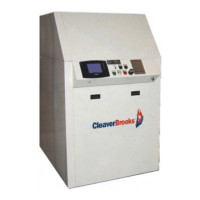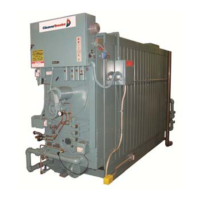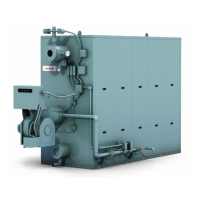Inspection and Maintenance
5-22
750-392
CBEX-DE
5.19.1 — Furnace Liner
Maintenance consists of occasional wash coating of the entire liner. Face all joints or cracks by applying high
temperature bonding mortar with a trowel or fingertips. Wash coating should be done as soon as cracks are
detected.
Should segments of the liner burn away or fall out, replace the entire refractory piece. Any refractory that may
break out should be removed as soon as detected so that it will not fuse to the bottom of the furnace and
obstruct the flame.
If replacement is necessary, remove existing refractory and thoroughly clean the furnace to remove all old refrac-
tory cement or other foreign material to ensure the new liner seats firmly against the steel. Inspect the furnace
metal.
The furnace may be plain or corrugated. If the furnace is corrugated it is necessary to fill in the corrugation val-
leys under the furnace liner tile from the 4 o’clock position to the 8 o’clock position with insulating cement. The
liner tile should be fitted tightly against the crown of the corrugation.
5.19.2 — Throat Tile
Replacement throat tile must be installed to maintain an approximate inside diameter to match the burner hous-
ing, and be centered in the furnace. Since the thickness of the furnace metal varies with the boiler design pres-
sure, a shim of appropriate thickness must be used to compensate for the variance. A layer or two of insulating
board or equal, or a bed of refractory material, may be used to center the ring. The liner tile can be fitted tightly
against the furnace, since the finished diameter is not critical.
It is recommended that the tile be dry-fitted, match-marked, removed, and then re-installed with the proper
amount of refractory cement. Thin joints (less than 1/16”) are desirable. Generally, it will be necessary to shave
a portion from one or more tiles to obtain a fit. If a fill piece is required, cut it to fit and install the piece at the
bottom of the furnace. When installing the housing, or the tile against the housing, liberally coat the surface with
refractory cement. Remove any cement that is squeezed out.
Allow refractory to air dry as long as possible. If immediate use is required, fire intermittently at a low rate for
several hours to thoroughly dry the refractory.
The area between the burner housing and the throat tile requires a good seal. An improper or poor seal allows air
leaks that can cause overheating and burning of the burner housing metal. The area should be inspected semi-annu-
ally. Contact your local Cleaver-Brooks representative.
!
Caution
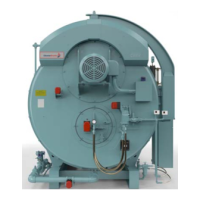
